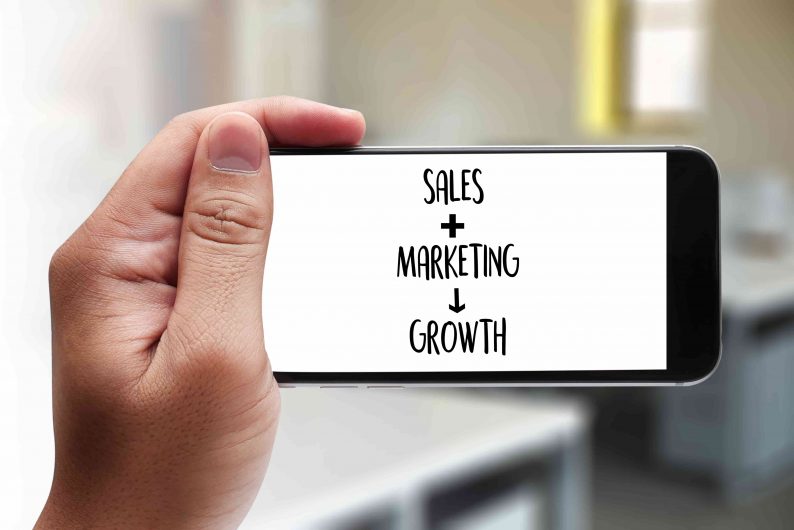You must get user buy-in for a successful CRM implementation
04 Sep 2019 | by Brett Mundell
Discover effective ways to engage employees for a successful CRM implementation.
You can’t give your customers a great experience if you can’t effectively reach out to them. Digital tools can improve your ability to find and market to the right people at the right time, which is a reason to invest in Customer Relationship Management (CRM) software.
But building good relationships still hinges on personal connection. Software is only helpful if it supports your sales, marketing, customer care and service teams to more easily engage with potential and existing customers in ways that deliver value and satisfaction.
Embedding a CRM tool within your business, therefore, requires the input and backing of your employees. Without thoughtful efforts to gain end-user acceptance, you’ll likely experience pushback.
It’s futile to outlay money on a product nobody wants to use: it doesn’t help your customers or your bottom line.
Approach your CRM implementation with employees on your side
Getting buy-in early is important. The sooner you make people aware of the upcoming change and involve them in the process, the more opportunity they have to prepare and adjust.
Tap into your team’s first-hand knowledge at every stage, including:
-
- Planning: To understand current sales and customer management approaches, and what is needed in a system to align with and enhance these processes.
- Selection: To evaluate, demo and provide feedback to narrow down your software options. In particular, providing input on the user experience of different solutions.
- Implementation: Include team members in your project management team and during the critical data preparation and testing phases of CRM implementation.
.
As soon as you start considering your software needs, you should involve representatives from a variety of customer-facing parts of your business.
A recent how-to article on CRM implementation best practices published by CIO Magazine highlighted the importance of understanding how users work. Many different roles may access and leverage customer data for their work. Don’t assume you know: ask!
Gather details about what people do now, why they work that way, and how they think or expect it to work in the future, driven by your new CRM solution. You’ll likely uncover information that gives you a clearer picture of what features you need in your new system.
[RELATED – Tips for more effective change management initiatives]
Allow time for a quality set-up and data accuracy
An important aspect of gaining user buy-in is allowing for the time, expertise and effort required to establish a highly accurate and well-configured CRM solution.
Don’t short-change your team by rushing critical steps that will ensure the new CRM can be trusted. If the new system throws up inaccurate and irrelevant information, or isn’t tailored to your team’s workflows, why would employees feel motivated to use it?
It can take a while to amalgamate and clean data about customers and transactions in preparation for the new CRM solution, especially if that data is currently stored in multiple systems or spreadsheets.
In order to properly enter, check, revise and structure customer data, you may need to give some tech-savvy team members a break from their regular duties, or hire an extra resource temporarily.
Communicate often and focus on benefits
You can’t involve every end-user at every point during the implementation, but you can keep people well informed and give them the practical skills they need to use your new CRM system.
Your Board and leadership team, project management team and project champions should actively talk about the value, progress and impact of the changes underway. Training and ongoing technical support are also vital.
Provide broad information and high-level training, but wherever possible hone in on benefits and features that will assist individuals to do their jobs better, make more sales and save time on everyday tasks.
[RELATED – What kind of internal resources are needed for an implementation project?]
Bring your team on the journey towards a 360-degree customer view
Information about customers made accessible via a centralised system can be a game-changer for your business. It means employees waste less time searching for the information they need to do their jobs and leave customers with a positive impression.
Of course, many parts of your business could be improved by a more customer-centric viewpoint. That’s why SMEs that are scaling quickly are increasingly seeking to adopt CRM tools as part of an enterprise-wide approach to business management.
Many leading, cloud-based Enterprise Resource Planning (ERP) solutions include customer management or seamlessly integrate with powerful CRM systems. You can get complete oversight and control of end-to-end operational, logistical, financial and customer-focused functions.
That benefits end-users who can log in to just one platform to see, share and act on information about customers across the business: from purchasing and managing stock, through to orders and sales, and how and when finished goods are made/delivered, plus consolidated data about performance and revenue.
When your team is engaged and can effectively leverage customer data organisation-wide, they’re more capable of putting customers first and building relationships that lead to long-term loyalty.
Continue the CRM implementation journey to guarantee success
Once implemented and live, your CRM system and users cannot be left to simply “go at their own pace”. Careful management of the CRM solution is required post-go-live to guarantee success. Management of data, sales opportunities, marketing campaigns and pipeline is required for success. The underlying data must be entered by sales and marketing teams. Often, these teams are travelling to and from customer appointments. Data needs to be put into the system whilst travelling and/or at customer meetings. This creates challenges associated with usability from mobile devices and internet connectivity. Furthermore, sales teams are often not focused on putting detailed data into the CRM solution. At the end of the day, if data is not entered into CRM in a structured and timely manner, the CRM project will fail. There is no point in a sales manager using CRM to evaluate the current sales pipeline if the data is outdated.
Multiple measures can be taken to achieve sales buy-in:
-
- Show value – show salespeople the value in having up-to-date sales and marketing data inside the CRM solution. Demonstrate great reporting, to-do lists and workflow that can add value to a salesperson’s day-to-day functions.
- Help sales team members sell more – use CRM to evaluate opportunities and to increase revenue and margins. Showing sales team members that they can sell more and/or increase margins and therefore make targets and earn more money helps motivate the correct use of CRM solutions.
- Increase efficiency – automate tasks to increase efficiency – showing sales people that they can get more done in a day, to allow them to focus on what’s important – selling and customer care. Ask the sales team members which tasks they believe can be automated, and then get to work to use CRM to automate those tasks. Examples might include the electronic creation of quotations from a mobility device that allows the quotation to be electronically converted to a sales order when the customer provides the approval to proceed. This simple automation saves time and money.
- C-level buy-in – similar to implementing an ERP solution, senior management buy-in is required to improve your chances of success. Make sure that the sales and marketing teams understand that all C-level execs have bought into the process and that updating the CRM solution and adding your relevant data to the solution is a “must-do”.
- Appoint a CRM manager – appoint an internal CRM Manager or Product Manager. This person will be constantly looking for ways to add value in the CRM solution. The CRM Manager will have regular meetings with sales team members and sales managers to understand which areas of the solution can be further streamlined to add value. The CRM Manager will also be ensuring data integrity and updates in the system by running system audit checks and relevant reporting to encourage sales team members to keep their CRM and sales data up to date.
- Check the data – run regular checks on data to ensure that the CRM is updated on a daily basis. If a salesperson has done five sales calls in a day, there should be a minimum of five CRM updates, detailing the outcomes and next steps from each appointment. If the data has not been entered into CRM, then chase the salesperson to get the job done.
- Manage sales meetings – use CRM to manage the content and flow of sales meetings. Run sales meetings report directly from CRM, during the sales meeting. Doing this will quickly identify data gaps and requirements (sales opportunities, sales pipeline, etc.) that have not been updated. Sales team members will quickly start to embrace doing regular updates to CRM to be ready for the next sales meeting.
- Appoint super users – these super users will have specific product and domain expertise. They can help users with additional training and system configuration. Super users should always be on the lookout for improvements that can be made to CRM and the relevant processes.
- Make the system easy to use – make sure that the sales team and sales managers find the system easy to use and easy to access from a mobility device. Updating a sales opportunity after a sales appointment should be done with a few clicks, from any device.
- Provide comprehensive training – keep training and re-training users to find more effective ways of managing CRM and the associated sales cycles.
- Integrate CRM to ERP – If you don’t integrate CRM and ERP, you only get half the picture, and your sales team don’t get the full benefit of CRM. Consider a few integration scenarios as follows:
- A sales team member is about to visit a customer. Before starting the meeting, your CRM solution can provide information not only about the customer, previous sales engagements with the customer and marketing but also integrated information from the ERP solution. Surely the sales person will find it useful to be able to review previous customer orders, check for any late deliveries, any warranty or return issues and get a view of current outstanding customer payments/debtors? Imagine all of that information being made available to the salesperson before the meeting even begins. When the salesperson is with the customer, it makes sense to be able to review customer pricing, check stock availability and place an order on behalf of the customer to ensure quick quote to cash cycles. This is not possible without integrated CRM and ERP.
CRM Solutions can have a marked impact on your business, helping sell more, at increased margins, in a structured, process-driven way. Focus on constant improvement to get the most out of your CRM implementation.
Leverage Technologies is are expert in helping Australian businesses successfully choose and implement enterprise solutions. Contact us for advice on getting started.

Brett has more than 20 years of business software sales and company management experience. Brett has been involved in more than 300 ERP projects. His passion is customer satisfaction, making sure every client is more than just satisfied. Brett wants our customers to be driven to refer their friends and peers because we offer the best services and technology available and because we exceeded their expectations.





Leave a comment